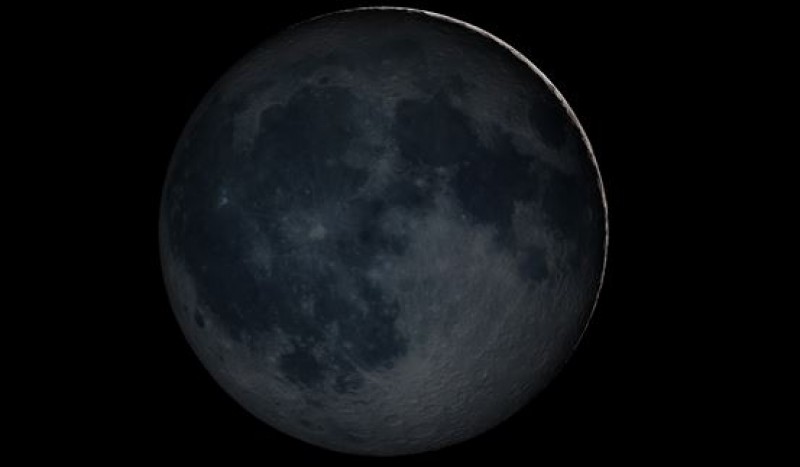Without the moon, it's often a lot easier for people in darker-sky locations to catch things like the Milky Way and nebulous objects. From the city, it means that one can spot relatively fainter stars, since the moon's light doesn't add to the "washing out."
New moons occur when the moon is on the same side of the Earth as the sun. Strictly speaking, it's when the moon is at the same right ascension, or celestial longitude, as measured from a line that runs north celestial pole (the point near Polaris, the pole star) through the celestial equator where the sun crosses it in the spring. (This point is also called the vernal equinox). [The Planets in 2018: When, Where (and How) to See Them]
No sunlight reflects off the moon's surface toward the Earth, as it is "behind" the moon, which means the moon is invisible. January's new moon occurs at 9:17 p.m. Eastern Time on January 16 (0217 GMT on January 17). Both the sun and moon are below the horizon at that point. A day or two later a tiny sliver of the moon should be visible, just after the sun sets.
In January Venus and Jupiter are close together in the morning sky, and on the mornings of January 16 and 17 one can see them together about two thirds of the way up from the horizon by sunrise (they will be at altitudes of about 71 degrees).
The Brightest Planets in January's Night Sky: How to See them - and When
Sunrise on those two days is about 7:17 a.m. Observers with a relatively flat horizon and clear skies might be able to catch hard-to-see Mercury, as it will be near Saturn, which is often brighter and easier to orient by. On January 16 Saturn rises at 4:30 and Mercury at 4:47 local time in New York, so for about two hours (possibly more depending on the weather conditions) one can see them. Both will reach altitudes of more than 30 degrees.
The last of the naked-eye planets, Venus, rises at 6:16 a.m. New York time, so it is a bit harder to see as it will still be close to the horizon when the sun comes up, only getting 14 degrees up (about one and a half fist-widths at arm's length).
Usually as one goes south, the planets seem higher in the sky and are easier to see. January won't offer that, because of some quirks of celestial mechanics. For example, Miami-based observers in Miami will see Mercury rise at 5:56 a.m. local time, but the sun rises about ten minutes earlier than in New York, so Mercury is a degree or two closer to the horizon, as is Saturn. Venus will still be below the horizon at sunrise.
Deep-sky objects like the Orion Nebula or the Andromeda Galaxy, not having to compete as much with the moon, are also good targets even in light polluted areas. The Orion Nebula, or M42, is in the constellation of Orion, which rises right around sunset in January (which is just before six o'clock in mid-northern latitudes).
The Andromeda Galaxy, meanwhile, will be high in the sky by the time the sun sets, near the meridian (the highest point it gets to) and visible in a good pair of binoculars if the city lights are too bright.
Taurus the bull flanks Orion and contains the Hyades cluster, a group of stars that is the "head" of the bull. Taurus rises just before Orion and is on the Hunter's right as seen from the ground. In Taurus is the Pleiades star cluster, a loose group of stars 444 light years distant.
Just below Orion in the Sky is Canis Major, the Big Dog, containing Sirius. As the brightest star in the northern skies it's obvious enough even form the middle of a brightly lit city street. It's one of the nearest stars to Earth, only 8 light years away.
Another close neighbor to the sun is Procyon, or Alpha Canis Minoris, the brightest star in the Little Dog, which also rises about the same time the sun sets. Not quite as bright as Sirius, it is only 11 light years away.
If the sky is a bit darker, one can spot Tau Ceti, another close neighbor 11 light years away in the constellation Cetus. Cetus will be high in the sky at sunset, just south of Pisces. Tau Ceti is only a fraction as bright as Sirius, or the brighter stars in Orion. However Tau Ceti will be familiar to science fiction fans – it's a common setting for extraterrestrial adventure because the star itself is similar to Earth's sun. A planetary system has since been discovered around the star, though it's not likely any of those planets is anything like Earth.
Source: Jesse Emspak
